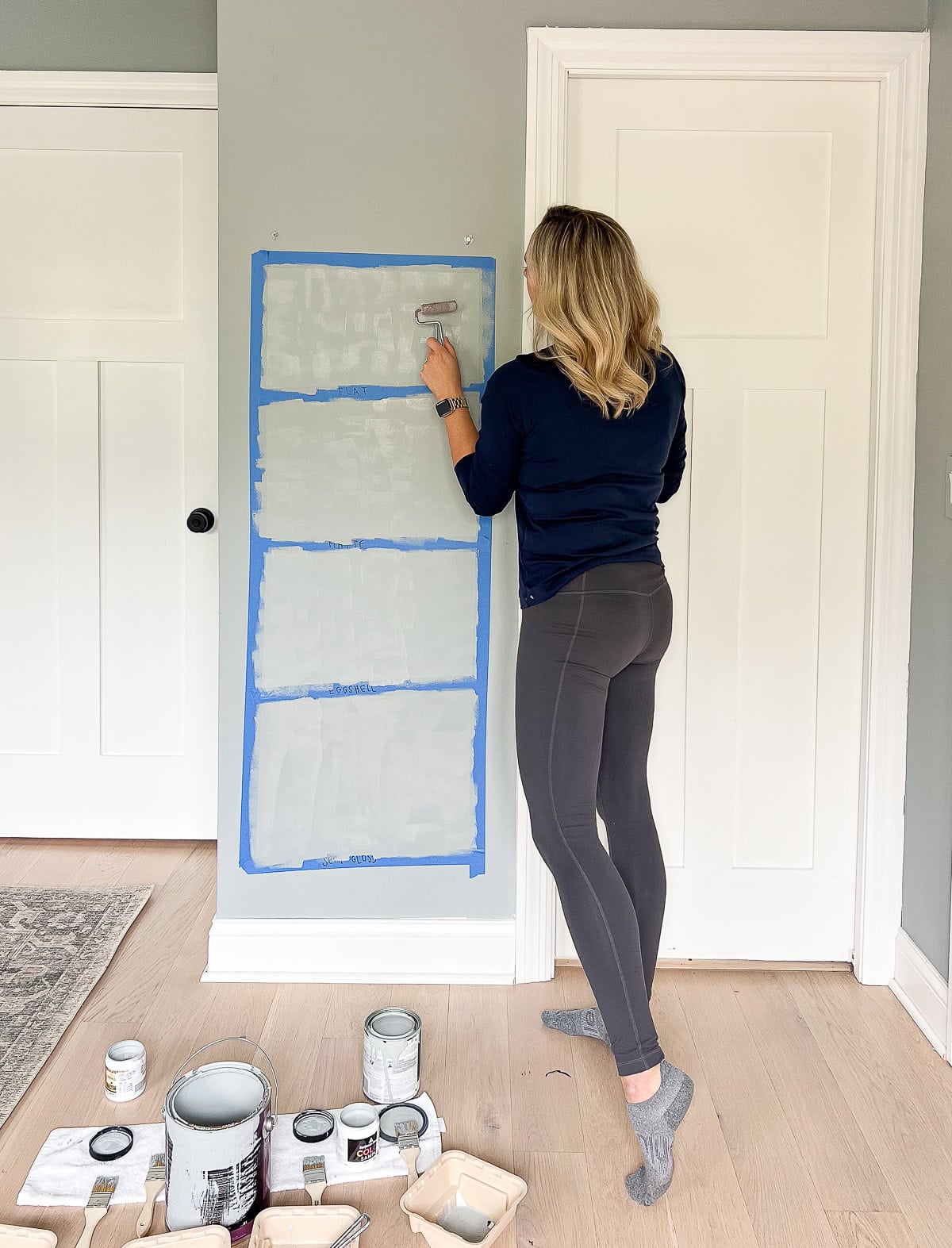When it comes to any paint project, choosing the perfect paint color is one of the hardest parts of the process. It feels like there are infinite options and it can be overwhelming to narrow it down to your top choice. (Btw, this blog post walks you through my best tips to choose a color!).

But somehow, you finally figure out the winning color. You go to the paint store, tell them which color you want, and you’re quickly asked, “What sheen would you like that in?” Sheen? This wasn’t something you even thought about!

The paint sheen (or finish) makes a big difference in the overall look of the finished product, so it shouldn’t be an afterthought. Luckily, I’m here to walk you through everything you need to know about paint sheens so you can answer that question with confidence!
What Is Paint Sheen?

The paint sheen is a measure of how much light reflects off of a painted surface. It tells you how shiny it is! They range from no shine to high shine and the different levels of sheen can affect how colors appear on your walls. Any interior paint color can be mixed into any sheen.

I decided to display four paint sheens on a wall in our bedroom to showcase the different types of sheens in real life. Our bedroom is currently painted the color “Boothbay Gray” in an eggshell sheen. I got that same color in flat, matte, and semi-gloss to show the difference.
Paint Sheen Guide

As you figure out the right paint sheen for your space, keep these characteristics in mind…
- Lower sheen = more saturated color, less durable, hides wall imperfections
- Higher sheen = less saturated color, more durable, showcases wall imperfections
Flat Paint

Flat paint is a finish that doesn’t reflect light at all. This lack of reflection is helpful when it comes to camouflaging flaws and creating a uniform look.

Even though it can mask imperfections, it’s the least durable of all the paint sheens. Stains are almost impossible to remove from flat paint (I tried to get out this whiteboard marker and it wasn’t budging!), so you won’t often see flat paint used on walls. This is typically what you’ll find on ceilings.
- Pros: Hides surface imperfections, rich color, great coverage
- Cons: Least durable
- Uses: Ceiling (low-traffic areas only)
Matte Paint

Matte is the next sheen level up from flat. It doesn’t have much shine to it and provides a great depth of color. Similar to flat, it isn’t very durable.

I chose to paint the ceilings in our bedroom in the color “Boothbay Gray” in a matte sheen. This showcased the gorgeous blue color well, but kept the shine low, which is the vibe I was going for in that space.
- Pros: Pigmented color
- Cons: Not very durable
- Uses: Bedroom, dining room
Eggshell Paint

Eggshell is the most common paint sheen and the one I recommend for most painting projects. Think of the shine on an egg – that’s the luster you can expect from an eggshell finish! It has a bit of shine to it, but not much.

Eggshell is easy to clean and durable, which is why I think it’s such a popular finish choice. It reflects more light than matte and flat sheens and can work in just about any room in your house.
- Pros: Durable finish, easy to clean
- Cons: Not as saturated as flat/matte
- Uses: Family room, hallway, bedroom (high-traffic areas)
Satin Paint
Moving up the sheen chart, we come to satin. As you can imagine, it’s shinier than eggshell and even more durable. It has a pearl-like finish and soft sheen. This is another common choice for walls and it’s very versatile.
- Pros: Durable, stain-resistant
- Cons: Showcases wall imperfections
- Uses: Busy spaces like bathrooms, kitchens, and laundry rooms
Semi-Gloss Paint

Semi-gloss paint comes with a very noticeable shine (see the shiny box in the photo above) and isn’t something you often use on walls. Instead, it’s the most common sheen for millwork including window trim, baseboards, and interior doors. In fact, that’s what we have throughout our entire home.

It’s very durable and wipeable, making it a good choice for surfaces that are touched often, like doors!
- Pros: Durable and wipeable
- Cons: Very shiny, showcases imperfections
- Uses: Trim, molding, doors
High-Gloss Paint
Finally, we have high-gloss. I’ve never actually used a high-gloss sheen before, but from what I’ve heard, it’s incredibly difficult to use. In fact, some professional painters won’t use it because you need so many coats and it’s prone to showing brush marks. It’s not something that you want to DIY if you’re new to painting.
High-gloss almost has a mirror-like or glass-like finish, so it accentuates any wall blemishes. I’ve mostly seen it used in high-end interior design for a glamorous style.
- Pros: Most durable
- Cons: Difficult to apply, showcases wall imperfections
- Uses: High-end interior design or accent furniture
One More Tricky Thing

While these are the most common paint sheens, some brands have different names to describe different sheens. Plus, not every brand offers every sheen. This tends to make things even more confusing.
For example, Farrow & Ball has sheens called “dead flat”, “modern emulsion”, and “estate emulsion”. I would do some research on each type of sheen before committing. That way, you will make the right choice for your next project.
What I Have In Our Home
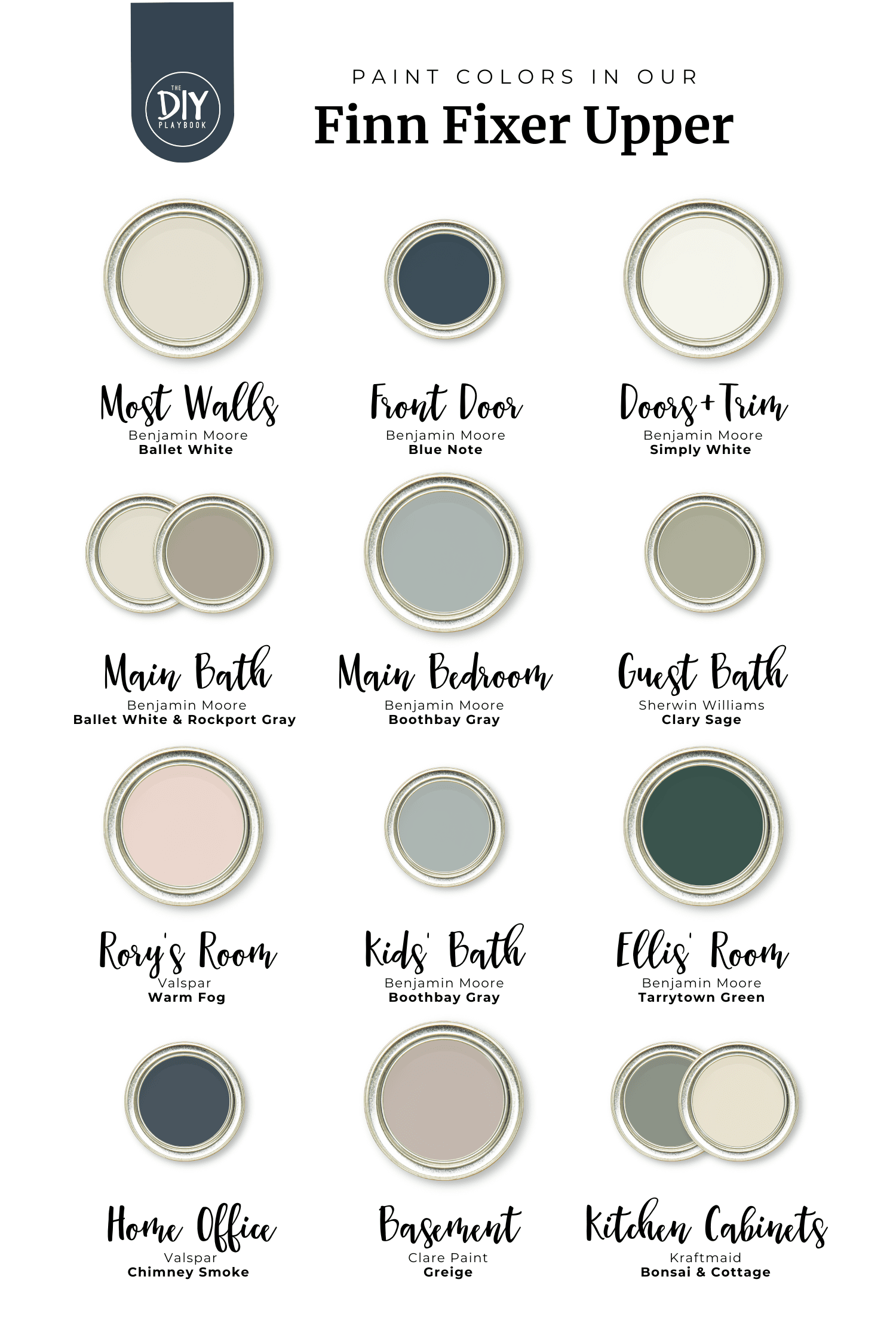
I thought it might be helpful for you to see some examples of what these sheens look like in the real world. First, here’s a graphic roundup of all of the paint colors in my home. You can read more about them here.
Most Walls – Eggshell Sheen
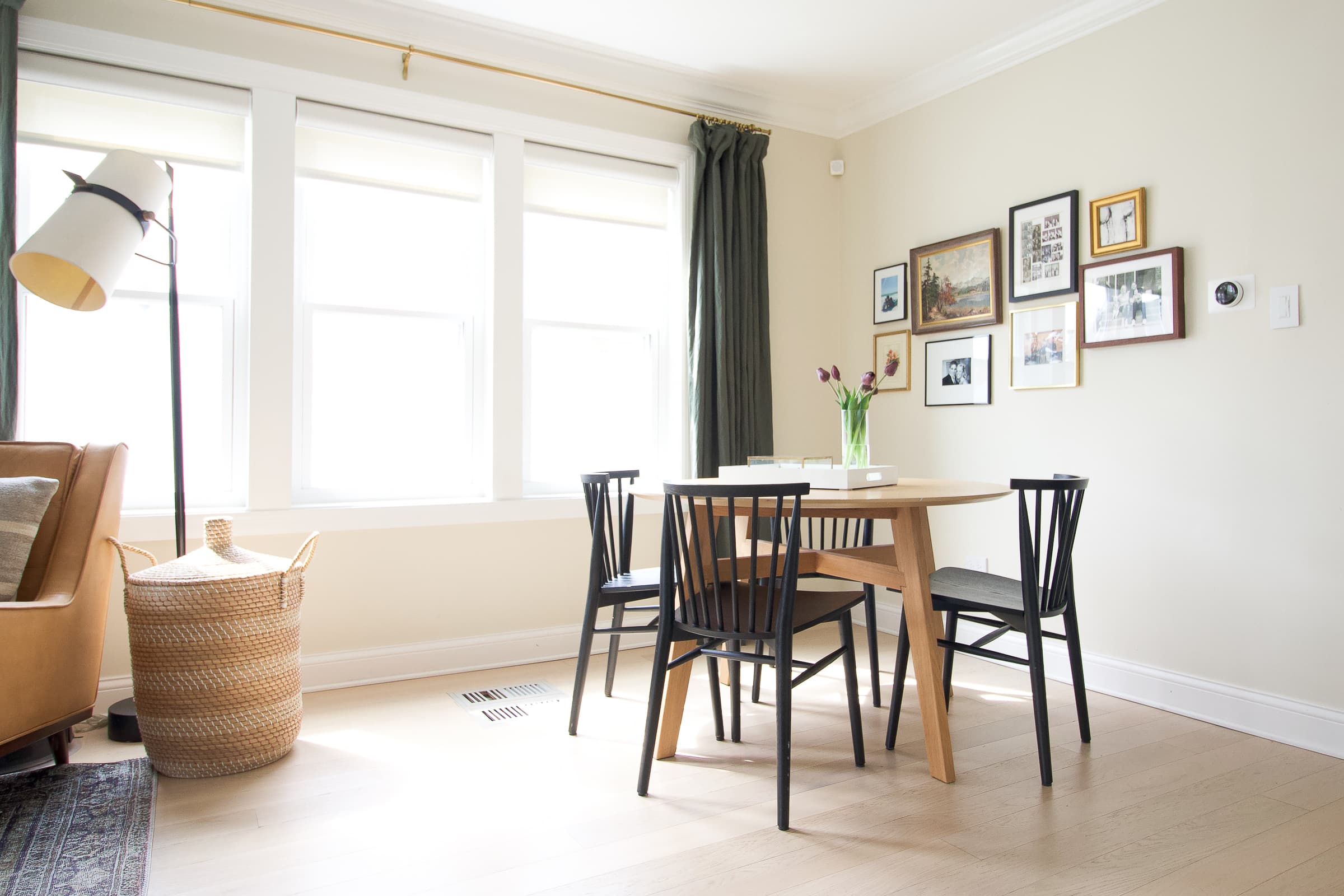
On most of the walls in my home, you’ll find an eggshell sheen. It’s a great option because it isn’t super shiny and it’s very durable and stain-resistant. With two young kids and a busy home, I can’t be worried about every last little scuff or mark on the wall. This is especially helpful in the kids’ rooms and family room.
Most Ceilings – Flat Sheen

For ceilings, I have a traditional flat white ceiling paint. It’s typically inexpensive and you can buy a non-tinted color (just a regular white) in a large five-gallon tub to paint your entire home.
Bedroom Ceiling – Matte Sheen
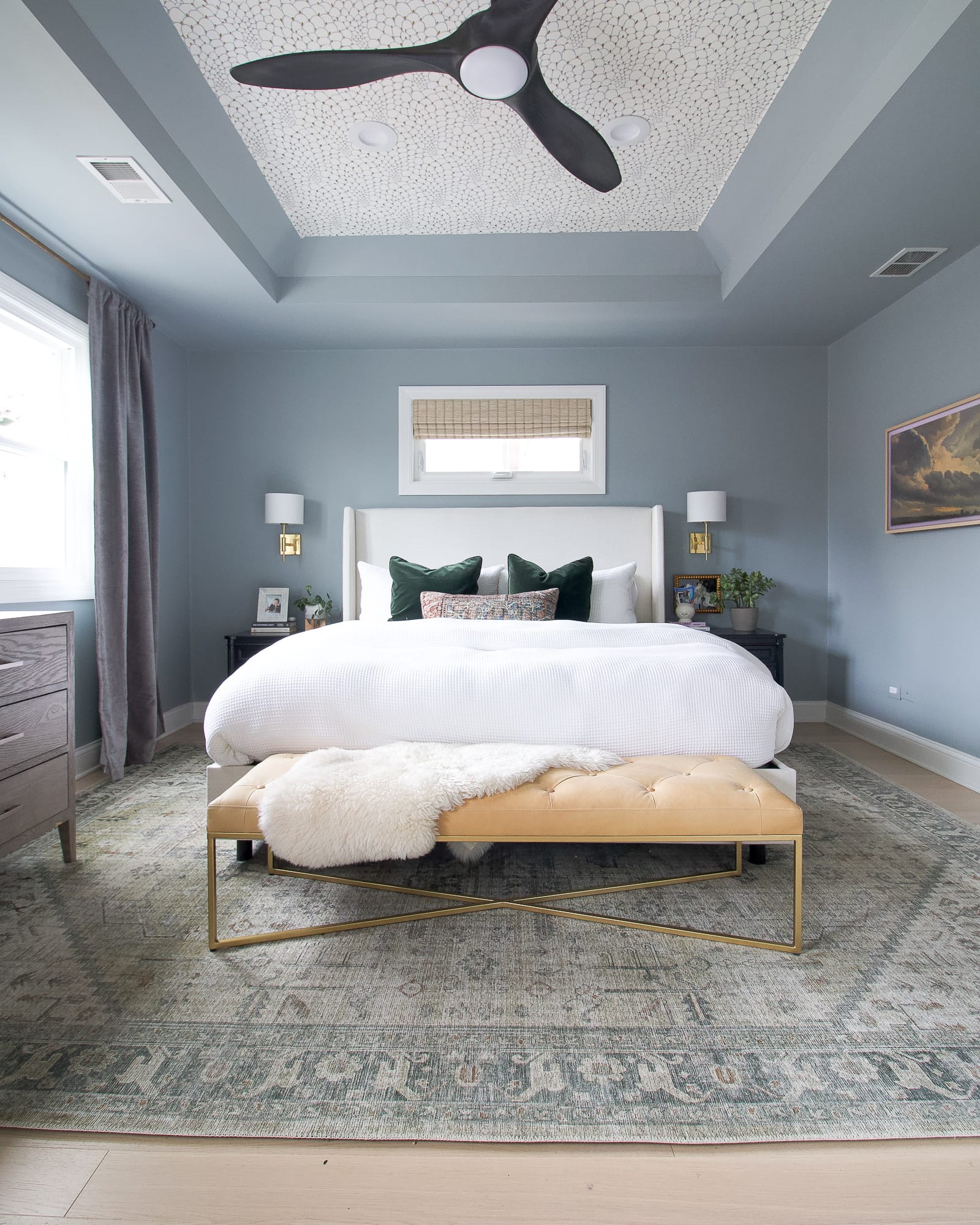
As mentioned, I wanted a saturated hue of the color “Boothbay Gray” on my bedroom ceilings. For this, I went with a matte finish and I love the end result.
Doors & Millwork – Semi-Gloss Sheen

All throughout my home, you’ll find the window trim, baseboards, and doors painted in the Benjamin Moore’s “Simply White” in a semi-gloss finish. I love semi-gloss for trimwork because it’s incredibly durable and easy to wipe clean. We get so many stains and fingerprints on our doors (Those little kids keep me on my toes!), and I can usually wipe anything away with a wet washcloth.
Bottom Line
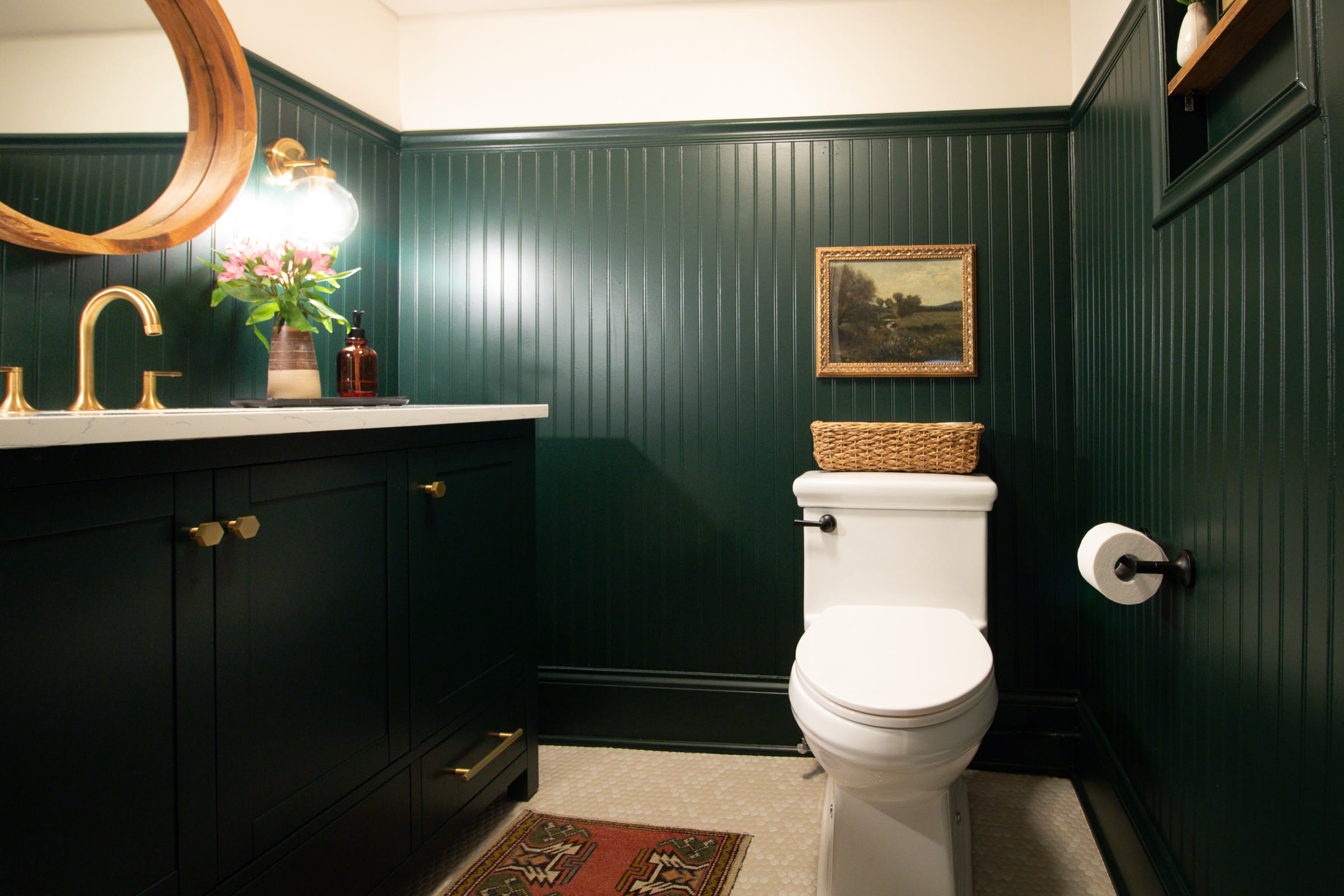
If you’re still feeling overwhelmed with all of this information, I want to make this easier for you. Here’s what I would choose, based on your paint job.
- If you’re painting a wall, opt for eggshell or satin.
- If you’re painting trim work or doors, opt for semi-gloss.
- If you’re painting a ceiling, opt for flat.
Go Forth & Paint

I hope this was a helpful post that breaks down everything you need to know when it comes to choosing the right sheen for your home. Now, you can walk into that paint store and confidently tell them exactly which paint sheen you want for your next paint project!
